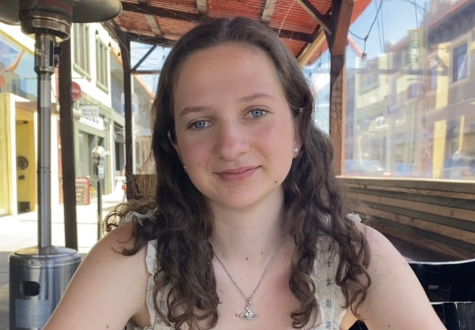Inside BB&N: Global Exchange Ambassadors
May 4, 2021
Available every other year, the Global Exchange Ambassador (GEA) Program allows participating Upper School (US) exchange trip students to have a more complete understanding of the country they visit through additional research they undertake and present during X block sessions before their trip. The GEA Program is available for Spanish, French, and Russian students and led by US Spanish Teacher Carrie Rose, US French Teacher James Sennette, and US Russian Teacher Joshua Walker, respectively. Freshmen, sophomores, and juniors are eligible to apply at the end of the school year and join the program and trip the following year.
While the exchange portion of the GEA program has not been possible since 2020 due to COVID-19, accepted Spanish and French GEAs for the 2020-21 school year could either postpone their trip until 2022 or participate in a virtual exchange, where they research and talk with their international counterparts about general topics and different aspects of the country they would have visited. All French GEAs have decided to postpone their experience, including the X block educational sessions, until next year, while some Spanish GEAs have participated in research and Zoom conversations.
Carson Eckert ’22, who was admitted to the Spanish GEA program during the 2019-2020 year, has been involved with the virtual exchange since March. He also has attended monthly informational sessions and conversations with Spanish students since September, when he began learning about specific aspects of Spain.
“It has been really fun talking to the Spanish students and seeing the similarities and differences between us,” he said. “A similarity that surprised me was how much American content they watch and listen to.”
In the 2019-20 school year, Russian GEAs were able to hold X block sessions, but they did not get the chance to travel. In lieu of a trip this year, they’ve been meeting monthly with their sister school in Moscow and are also exploring possibilities to travel to Russia sometime next year, Mr. Walker said.
During a normal school year, monthly X block meetings are led by Ms. Rose, Mr. Sennette, and Mr. Walker, who provide direction for students. Then the students conduct independent research and make a wiki page to present to the group. Across the three languages, topics discussed include cuisine, artists, daily life, education, and history of the country.
Mr. Sennette emphasized the value of the X block sessions for GEAs.
“Anyone can go to France and say, ‘Oh, there’s a cool tower,’ or ‘Oh, there’s a really old church,’ or ‘There’s a lovely castle,’ or whatever it might be, but I think the sessions really add some depth and some sort of ability to understand and grasp what you’re seeing,” he said.
Mr. Walker said the meetings are beneficial because they give students the time to thoroughly experience learning about different aspects of Russia.
“For the kids who are interested in going very, very, very deep into the experience of the exchange, we finally have the breathing space to do that,” he said. “The GEA Program carves out the time, attention, and energy for everybody to talk about the things they’ll experience.”
Jacqueline Haining ’22, who participated in the Russian GEA Program during the 2019-20 school year, appreciated that breathing space, explaining, “the GEA program] allowed me to research elements of daily and cultural Russian life that are either too niche or too complicated to delve into in a regular class period.”
On the exchange trips, GEAs have the chance to lead other BB&N students who aren’t GEAs, Ms. Rose said. “We’ll rely on the ambassadors to be the experts, and we might say, ‘Explain to the other kids the significance of what we’re seeing right now.’”
The program first ran for French and Spanish during the 2018-2019 school year and for Russian during the 2019-2020 school year. Ms. Rose developed the program with US World Language Department Head Cécile Roucher-Greenberg when she realized something was missing on the exchange trips, she said.
“I was taking the kids to museums, and they would walk around, and they didn’t really care about the art,” Ms. Rose said. “I was disappointed, but then I understood why: because if they didn’t know about those artists or the history, it was hard for them to be excited.”
For each year they have run, the Spanish, French and Russian programs have around 14, 11, and 4 GEAs, respectively, according t,o the program coordinators. Olivia Pollock ’21, an ambassador during the 2018-19 school year, said the program made her feel less lost during her trip to Spain and that the trip itself allowed her to experience all the things she had learned about in a classroom.
“I remember this moment when we all came to this Francisco Goya painting. It was sort of this abstract painting, and all of us were staring at it, and the ones who weren’t ambassadors were like, ‘OK, what is this?’, but the ones who were knew what it was because we had studied it before,” she said. “We could talk about its meaning and how it was about the Spanish Great Depression.”
Marie Quintanar ’21 chose to be an ambassador for the French program during the 2018-2019 school year to have a more in-depth look at places, people, and French culture, she said, adding that she especially appreciated the ambassadors with whom she attended X block sessions.
“Having a small group of people that were all interested in the same thing and focused on making the most of their time was really something that I loved about the meetings,” she said. “We wanted to share, we wanted to learn, and everybody was giving 110%.”


